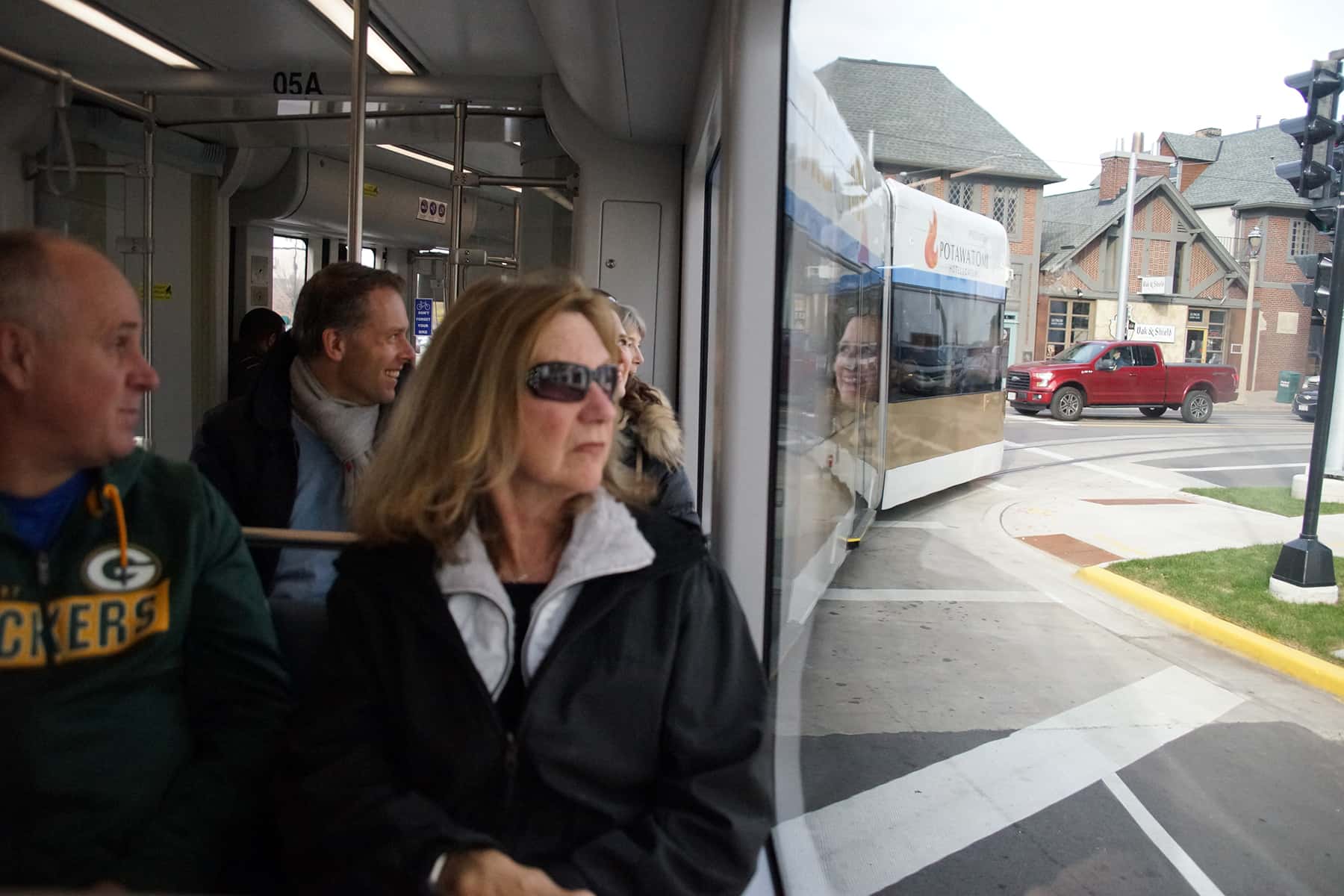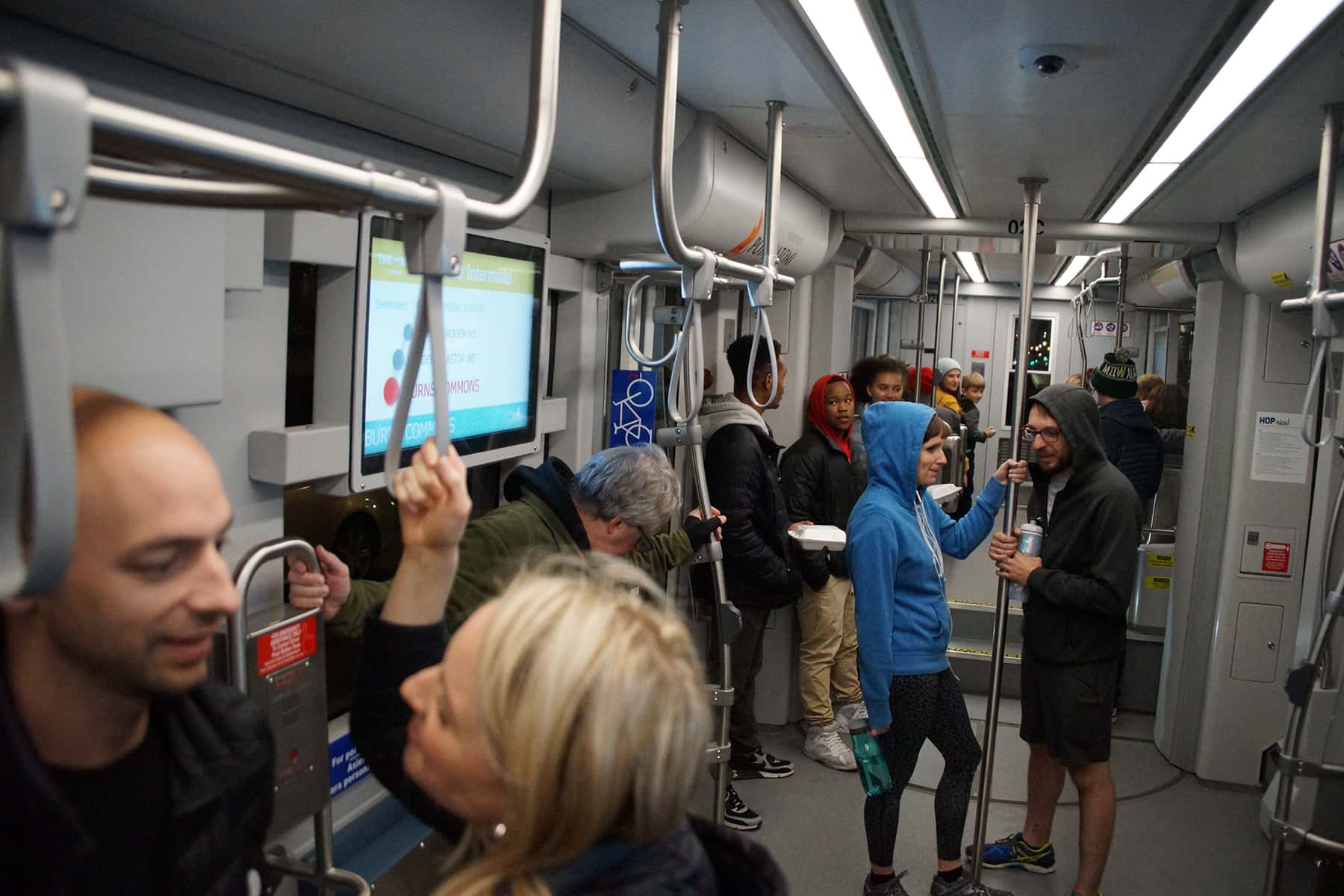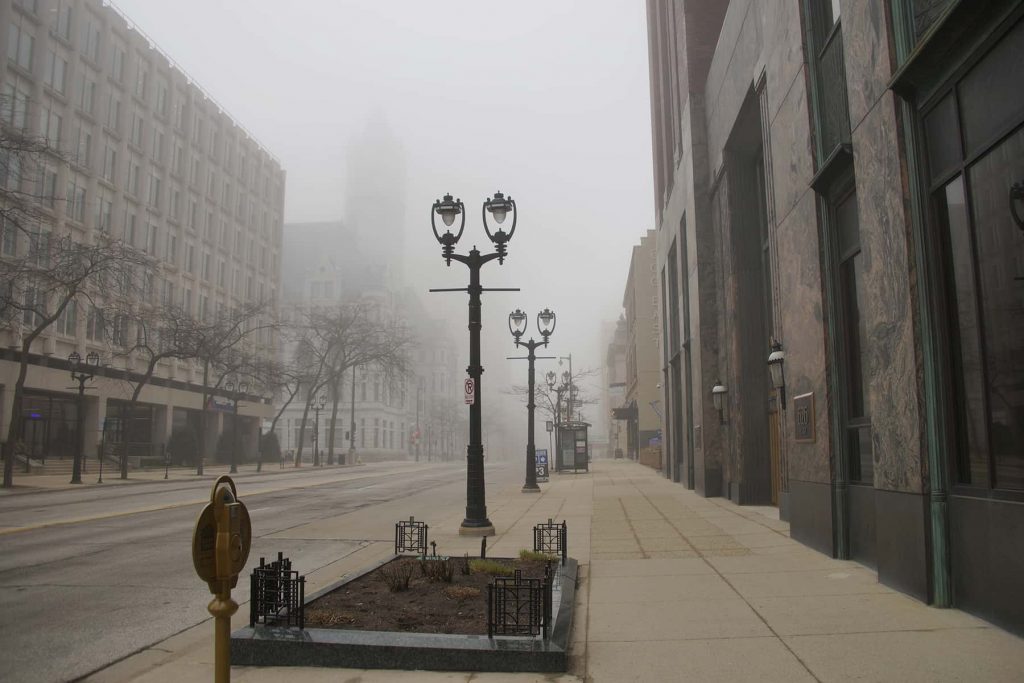
After The Hop’s grand opening weekend of November 2 saw more than 16,000 riders, Milwaukee City officials announced that the new $124 million streetcar continued to average just under 2,200 riders a day.
Before the launch, the city originally estimated ridership of 1,850 per day, 341 less than the 2,191 daily average total from the first two weeks of service, November 5 to 18. The highest one day ridership has so far been 3,806 passengers on November 17. The M-Line has been officially providing service for one month.
“We are continuing to work on additions with the customer service, and ways to introduce even more new riders to The Hop,” said Milwaukee Mayor Tom Barrett. “So far, we are really pleased with these preliminary numbers, along with the feedback we’re receiving from riders.”
The city estimates the annual operational cost for the The Hop at $3.2 million. If ridership levels remain consistent, when charging fares goes into effect after the first year of free service, the revenue is expected to bring in around $800,000 annually.
Fares are just one source of revenue for The Hop. Sponsorships like Potawatomi Hotel and Casino’s current deal, Federal grants, and a percentage of the city’s parking fund will help pay for the streetcar in the future.
“We were a little bit nervous starting service right before the winter months begin,” said Jeff Polenske, former City Engineer and the newly appointed Commissioner of Department of Public Works. “People are utilizing The Hop, and they are riding it more than we actually estimated. It’s great news.”
Statistics are showing that there is a base of riders who use the streetcar every day. Polenske said that they are using it for commuting to work in the morning and returning home, plus lunch excursions around downtown. As the warmer months approach, the city estimates more riders will hop on The Hop.
“After the spring, as the summer months come, we are going to get a sense of the seasonal ridership,” Polenske added. “Then we can determine how we best accommodate the peaks and valleys that we might see throughout the year.”
- Santa comes to downtown by Streetcar for 2018 holiday lights festival
- A map to food and drinks along Milwaukee’s Streetcar route
- By The Numbers: Statistics released for Grand Hop-ening weekend
- From rendering to reality: Milwaukee’s Streetcar is officially a thing
- First weekend of Streetcar operations did not end Western Civilization
- Mayor Tom Barrett previews the M-Line Streetcar route with first passenger ride
- From construction to testing: An 18-month look at Milwaukee’s Streetcar
- “Grand Hop-ening” celebrates launch of Streetcar’s passenger service with weekend of events
- “Hop-able” Open House showcases Streetcars’s accessibility features
- City Assessor finds property value along Streetcar route climbs 28%
- Hop On, Milwaukee! Streetcar service to begin November 2
- Milwaukee’s streetcar fleet now complete with arrival of fifth and final vehicle
- First crew of the Milwaukee Streetcar takes full-route daylight test drive
- Milwaukee Streetcar makes special appearance at Cathedral Square for Bastille Days
- The Hop marks major milestone for end of Streetcar construction with ceremonial last weld
- Safety tips released for motorists and pedestrians on sharing road with The Hop Streetcars
- The Hop to hold job fair for Streetcar positions
- Milwaukee’s first streetcar for The Hop completes successful maiden track test
- After half century Milwaukee is again home to a Streetcar
- Streetcar manufacturer delivering first vehicle to Milwaukee
- Streetcar route alters festival footprint for 2018 Bastille Days
- Milwaukee Streetcar reaches deal with Transit Workers Union
- City seeks proposals for marketing Milwaukee Streetcar
- The Hop: Potawatomi’s $10M Streetcar sponsorship includes free rides
- Mayor Barrett walks with Streetcar workers along Milwaukee’s transit future
- Photo Essay: Digging up Milwaukee’s Streetcar Past
- Video: 1922 Streetcar Rails from Route 10
- Milwaukee Notebook: Streetcar builds on a sometimes strange history
- Streetcar construction on target to meet minority employment and contracts
- Another 320 feet of track cemented along Streetcar route
- Photo Essay: Streetcar work moves through downtown
- Crews reshape roadway as first streetcar rails installed
- Milwaukee public gets first look at streetcar rail construction
- Photo Essay: Streetcar leaves footprint as rail welding begins
- Construction of rail lines to begin for Milwaukee Streetcar
- Streetcar extension to connect Bronzeville and Walker’s Point in future
- Virtual rail system could bridge Milwaukee’s transit network
Lee Matz

















